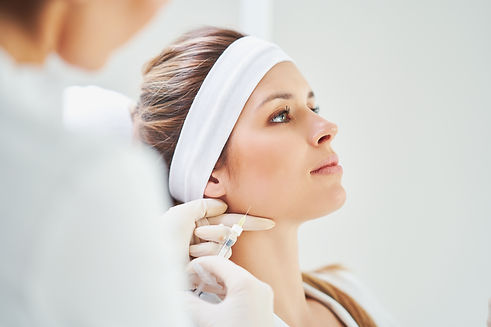

TMJ Dysfunction
The temporomandibular joint, also known as the TMJ, is the joint that connects your jawbone to your skull, acting like a sliding hinge and enabling you to speak, chew and yawn.
Disorders of the TMJ are commonly referred to as TMJ Dysfunction (or TMD), though some people simply call it “TMJ”. Dysfunction in the joint can lead to pain and discomfort.
Common TMD Symptoms
Common symptoms of TMJ dysfunction include:
• Tooth soreness not related to decay or injury
• Ear pain, ringing, or stuffiness in the ears
• Pain behind or around the eyes
• Sore/fatigued jaw muscles
• Temple/cheek pain that may radiate to the head
• Jaw popping/clicking/grating
• Locking of the jaw in the open or closed position
• Difficulty in opening the mouth fully
• Deviation of the jaw upon opening and/or closing
• Frequent headaches and migraines
• Neck pain and stiffness
• Loss of grip strength and/or tennis elbow
• Prickling, tingling, or numbness in fingers/hands
• Upper and/or lower back pain
• Sciatica


TMD Treatment
There are several ways to treat TMD, all of which center around relieving the muscle spasms that lead to pain and other symptoms. Once the jaw muscles are relaxed, the rest of the muscles in the body tend to follow suit, and TMD symptoms are alleviated.
The most common ways to treat TMD involve Transcutaneous Electrical Nerve Stimulation (TENS), occlusal splints (nightguards), Aqualizers®, and botulinum toxin (e.g. Botox). In more severe cases, surgical intervention may be needed to repair damaged joints.
Transcutaneous Electrical Nerve Stimulation (TENS) works by using an electrical pulse to stimulate muscle contractions so that your muscles essentially massage themselves. Your muscle’s own metabolism will generate heat that relieves pain and stiffness while improving mobility in your jaw.
TENS Therapy
TENS also stimulates the release of endorphins (“feel good” chemicals) from your brain. These endorphins are your body’s natural pain relieving chemicals that also work to lessen the symptoms associated with TMD.
Occlusal splints (nightguards) are hard acrylic appliances that are worn overnight (and sometimes during the day) to hold the muscles in an ideal position that alleviates spasm. The tooth-guided position (i.e. the way your teeth fit together when you bite down) is not always the same position that the muscles are most relaxed. The splint prevents the teeth from guiding the jaws into a position that may cause muscle spasm, which leads to pain.
For patients with TMJ dysfunction, occlusal splints are made in conjunction with TENS therapy. This ensures that the muscles are fully relaxed when the splint is in place, and the jaws are held in an ideal position while the splint is worn.


Aqualizer
The Aqualizer® is a fluid-filled splint that is intended for short-term relief and to aid with proper TMJ diagnosis. It not a replacement for proper dental treatment or permanent splints. If TMJ pain is alleviated by wearing an Aqualizer®, a permanent occlusal splint is then custom made for the patient.
The Aqualizer® applies equalized fluid pressure on both jaw joints, distributing forces evenly across the bite, reducing TMJ pressure and pain and ensuring relief. This equalized pressure enables the body to naturally balance itself, resulting in TMJ pain relief and improved function.
BOTOX
BOTOX® (Botulinum Toxin) is used as an alternative treatment for TMJ disorders and associated jaw tension and pain. When injected into facial muscles afflicted with soreness and discomfort, BOTOX® relieves TMJ and jaw tension for many patients. The injections often eliminate headaches resulting from teeth grinding, and, in cases of severe stress, BOTOX® can even minimize lock jaw. Although BOTOX® treatment for these conditions is presently experimental; evidence indicates that it can be extremely effective.
BOTOX® relieves jaw tension by making muscles unable to engage
in the powerful, often unconscious movement of the jaw
that produces headaches and pain.
The BOTOX® alternative treatment for TMJ disorders and jaw tension is usually quick, straightforward, and effective. A non-surgical procedure, BOTOX® injections are administered in our office. Most patients experience noticeable improvement within one or two days of their first treatment, although relief can take up to two weeks.
Dr. Aaronson has been certified by the American Academy of Facial Esthetics in Botox and Xeomin treatments for facial esthetics and smile enhancement, as well as TMJ pain and trigger point therapy.
Call now to schedule an appointment!
